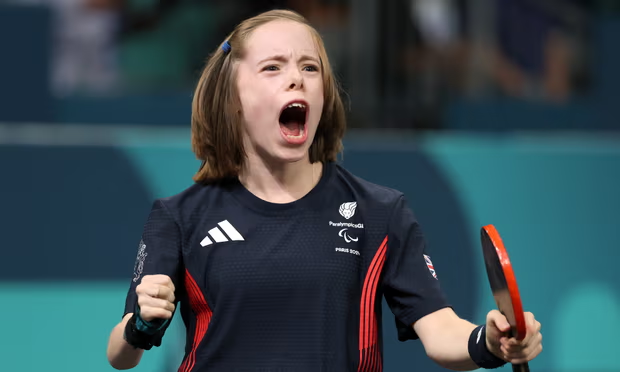A vibrant, well-attended Games showcased the best of parasport. But the challenges outside the sporting arena remain the same

- Bly Twomey, 14, became the youngest British Paralympian to win a medal in her debut Games. Photograph: Getty
The size of the crowds, the brio of the marketing and the enhanced profile of star athletes made London 2012 a breakthrough moment in Paralympic history. Since then, it has been a slightly rockier ride. Poor ticket sales and financial problems overshadowed the lead-up to Rio in 2016. Tokyo, delayed to 2021, was a behind‑closed-doors affair, blighted by Covid.
A lot, therefore, was riding on Paris 2024. And in multiple ways, Paris has brilliantly delivered. As the Games come to a close this weekend, the aggregate attendance could surpass 2.5 million – not far from the record set in London. The crowds have been passionate, and whenever a French athlete was in the running for a medal, fiercely partisan. Just as during the hugely successful Olympics, the French capital has provided a sumptuous, charismatic backdrop to thrilling sporting competition throughout the city.
The most gender-balanced British Paralympian group ever to compete has grabbed more than its fair share of glory. Coming into the final weekend, Team GB was vying with the US for second place in the overall medals table. Competing – astonishingly – in her ninth Paralympics, the cyclist Sarah Storey won her 19th gold, while the 14-year-old table-tennis star Bly Twomey became the youngest British Paralympian to win a medal in her debut Games.
There has been progress in the stands and in television studios, as well as on track and field. Channel 4’s vibrant presentation of the Paralympics since 2012 has served both brands well. The Last Leg remains a standout and this time the channel recruited the brilliant Rose Ayling-Ellis, the first deaf person to present live sport on television. It has also tried to learn from critiques of coverage that at times reduced Paralympian sporting achievement to a sentimental story of triumph over adversity. The dropping of its well-intentioned but grating “Superhumans” marketing strategy was a step towards genuinely equal treatment.
Sadly, it is less easy to be upbeat when it comes to the attitudes and structures that continue to limit the capacity of disabled people to live the lives they want to lead. The more disabled athletes have received the resources and support they need and deserve, the more they have thrived and developed. But parasport needs sustained backing in the years between Paralympics too. And, as Storey noted after her triumph this week, the logic of Paralympian success has yet to be properly applied outside the sporting arena.In the context of cuts to social care, perennial problems of accessibility in public places and workplace inflexibility, the daily realities of disabled people continue too often to be overlooked or treated as an afterthought. After being obliged to crawl off a train in London last week when no assistance arrived, Tanni Grey-Thompson used her status as one of Britain’s most famous Paralympians to shine a light on such second-class treatment. Responding from Paris, the new culture secretary, Lisa Nandy, said the legacy of Team GB “won’t just be measured in medals, it will be measured in opportunities”.
Ms Nandy is right, but similar statements have been made before. Paris 2024 has done a fine job in showcasing the talent and determination of some exceptional men and women. The challenge for this and future governments lies in finally translating the Paralympian message of meaningful inclusion into everyday life.